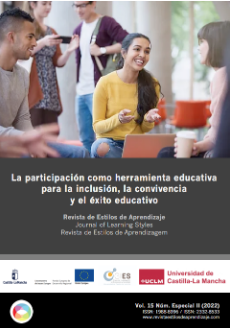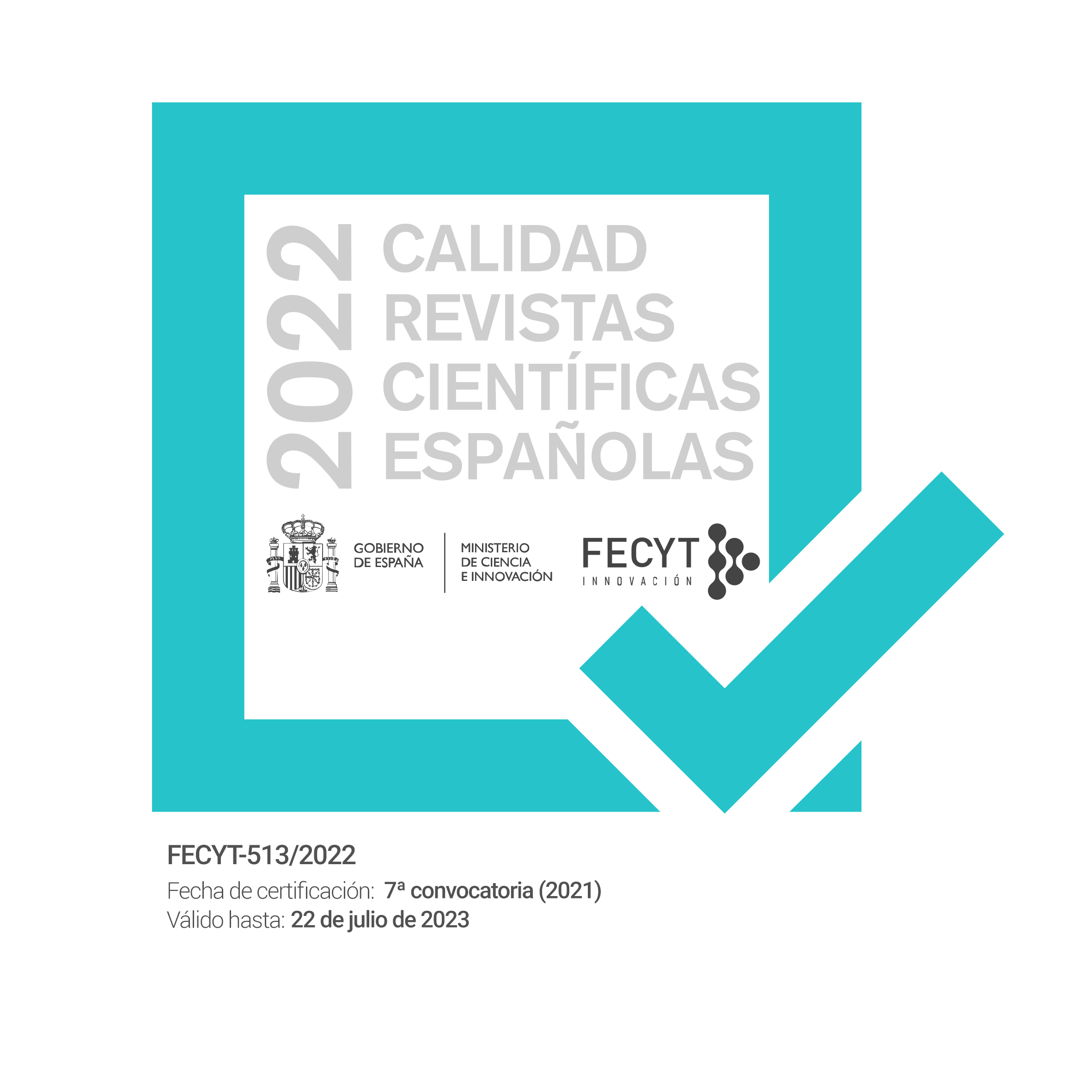Educational success and community participation: a study of the perceptions of adolescent and young Roma women in Castilla-La Mancha
DOI:
https://doi.org/10.55777/rea.v15iEspecialII.4477Keywords:
Women, Gipsy, Education, Employment, InclusionAbstract
This article shows the results obtained in an investigation into the perceptions and visions of Roma women in Castilla-La Mancha. It explores the knowledge of possible causes that are produced and reproduced in the group of gypsy girls and adolescents, which hinder their access, maintenance and promotion in the educational system. It also analyses their views on their participation in their environment, on the educational system and on the difficulties in their transition to employment. To this end, a feminist perspective was applied, using the gender approach in the project. The study, which was descriptive and applied, as it was conducted in the context of social action research, was carried out between October 2019 and January 2020. A mixed research methodology was used using surveys, focus groups and semi-structured interviews as techniques. This paper presents the main results collected from these interviews. The purpose of the study was applied, it is intended to investigate aspects that are necessary to take into account in the design of socio-educational actions aimed at the group, and that allow for adjustments in the design in the field.
Downloads
References
Belenguer, A. (2016). Educación y población gitana. Avances en Supervisión Educativa, 25, 1-34. https://doi.org/10.23824/ase.v0i25.547
Carmona , J., García-Ruiz, M., Máiquez , M. L., & Rodrigo, M. J. (2019). El impacto de las relaciones entre la familia y la escuela en la inclusión educativa de alumnos de etnia gitana: Una revisión sistemática. REMIE: Multidisciplinary Journal of Educational Research, 9(3), 319-34. http://dx.doi.org/10.447/remie.2019.4666
Delors, J. (1996). Los cuatro pilares de la educación-La educación encierra un tesoro. Informe a la UNESCO de la Comisión internacional sobre la educación para el siglo XXI.Santillana/UNESCO.http://repositorio.minedu.gob.pe/handle/20.500.12799/1847
Elboj- Saso, C., & Vicén, M. J . (2007). Brudila callí, las mujeres gitanas contra la exclusión: Superación del absentismo y fracaso escolar de las niñas y adolescentes gitanas. Flumen: Revista de la Escuela de Magisterio de Huesca, 10, 45-74. https://www.aecgit.org/downloads/documentos/120/brudila-calli-las-mujeres-gitanas-contra-la-exclusion.pdf
European Union Agency for Fundamental Rights (2012). Carta de los Derechos Fundamentales de la UE. https://fra.europa.eu/es/eu-charter/article/14-derecho-la-educacion
Ferrández-Ferrer, A., Sanchís-Ramón, M. J., & La Parra-Casado, D. (2022). Emerging discourses on education and motherhood with Roma women. Ethnicities, 22(6), 943-962. https://doi.org/10.1177/14687968221120683
Fundación Secretariado Gitano [FSG] (2013). El alumnado gitano en Secundaria. Un estudio comparado. Ministerio de Educación, Cultura y Deporte. https://redined.educacion.gob.es/xmlui/handle/11162/103661
Fundación Secretariado Gitano (2022). Estudio piloto exploratorio sobre la segregación escolar del alumnado gitano. Madrid. Fundación Secretariado Gitano. https://www.gitanos.org/estudios/estudio_piloto_exploratorio_sobre_la_segregacion_escolar_del_alumnado_gitano.html.es
Gradaílle, R., Marí-Ytarte, R. M., & Caballo, M. B. (2015). La igualdad de género y el empoderamiento de las mujeres: desafíos del milenio en clave educativa y social. Revista d’Intervenció Socioeducativa, 61, 41 -57. https://www.raco.cat/index.php/EducacioSocial/article/view/303807/393501
Hernández-Pedreño, M. H., Gómez, F. E. H., & Sánchez, M. G. (2020). Riesgo de exclusión de la población gitana en España e intervención social. Sociología Histórica, 10, 562-567.
Laparra, M., Arza, J., & Fernández, A. (2011). Diagnóstico social de la comunidad gitana en España. Un análisis contrastado de la Encuesta del CIS a Hogares de Población Gitana 2007. Ministerio de Sanidad, Política Social e Igualdad. https://www.msssi.gob.es/ssi/familiasInfancia/inclusionSocial/poblacionGitana/docs/diagnosticosocial_autores.pdf
García-Pastor, B. (2011). ¿Qué entienden las y los gitanos por educación? Cadernos de Educação, 39, 61-82. https://doi.org/10.15210/caduc.v0i39.1528
Márquez, M. J., & Padua, D. (2016). Comunidad Gitana y Educación Pública. La necesidad de construir un proyecto social y educativo compartido. Revista Interuniversitaria de Formación del Profesorado, 30(1). https://www.redalyc.org/articulo.oa?id=274/27446519009
Moreno López, R., Ytarte, R. M. ., Venceslao Pueyo, M. ., & Morales Calvo, S. . (2022). Social inclusion and equality between men and women: A study of ambivalent sexism in the Roma population. HUMAN REVIEW. International Humanities Review / Revista Internacional De Humanidades, 14(3), 1–13. https://doi.org/10.37467/revhuman.v11.4123
Sánchez, V. (2019). Retos y oportunidades para la inclusión de la población gitana más vulnerable: un acercamiento desde la experiencia navarra. Zerbitzuan: Gizarte Zerbitzuetarako Aldizkaria/Revista de Servicios Sociales, 68, 91-109. https://doi.org/10.5569/1134-7147.68.07
Shershneva, J. (Ed.). (2023). Dimensiones desde la desigualdad. Servicio Editorial de la Universidad del País Vasco. https://www.ikuspegi.eus/documentos/zabaldu/zabaldu1cas.pdf
Serrano, A., Blanco, F., Ligero, J. A., Alvira-Martín, F., Escobar, M., & Sáenz, A. (2009). La investigación multimétodo. En A. Serrano Pascual ( Dir.) Materiales prácticos para el abordaje de la articulación metodológica en las ciencias sociales. Ediciones de la Universidad Complutense. https://eprints.ucm.es/id/eprint/30034/
Toro, I. P., Álvarez, A., & Gamella, J. F. (2017). Un conflicto silenciado: Procesos de segregación, retraso curricular y abandono escolar de los adolescentes gitanos. Revista de Paz y Conflictos, 10(1), 35-60. https://doi.org/10.30827/revpaz.v10i1.5965
UNESCO (2010). Education for all Global Monitoring Report 2010. Reaching the marginalized. París, Francia: UNESCO. https://www.voced.edu.au/content/ngv%3A37498

Downloads
Published
How to Cite
Issue
Section
License
By submitting the original, the author(s) declare that they are aware of and accept, in full, the privacy policy as well as the copyright of the Learning Styles Magazine.
The Learning Styles Magazine offers free and open access to its content, completely free of charge, in order to bring scientific research to its readers and society in general. All digital contents are free and open access and are published under a Creative Commons license:

Rights are granted under the Creative Commons Reconocimiento-NoComercial-SinObraDerivada 4.0 Internacional (CC-BY-NC-ND 4.0)
The Learning Styles Magazine is an open access journal. Publication of articles or reviews in the Journal does not entitle you to any remuneration. For authors as well as readers, the journal is free Creative Commons Reconocimiento-NoComercial-SinObraDerivada 4.0 Internacional (CC-BY-NC-ND 4.0).
With this licence, the reproduction and dissemination of the contents of the magazine for educational, social and knowledge transmission purposes is permitted, without any profit motive in mind, provided that the source and authorship are not modified. The licence granted to Learning Styles Magazine allows the copying and distribution of the magazine's contents, as long as the authorship of the work is recognised, correctly specifying the author and the publishing entity. The work may not be used for commercial purposes, nor may it be altered, transformed or generated from this work.
The publication of articles or reviews in the Journal does not give the right to any remuneration.
The Learning Styles Journal invites the author/authors to increase the visibility and scope of their articles published by re-disseminating them in:
- Web spaces and personal networks, as well as in scientific meetings and forums
- Open institutional archives in Universities, educational repositories and Research Centres.
- Academic and scientific networks (Researchgate, Academia.edu, Plubons, etc.)
All these spaces and publications must include all the bibliographic data of the publication.
























